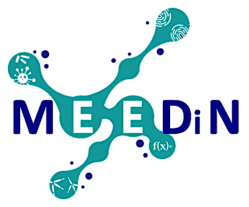The fate of drug resistant mutations depends on factors which we may be able to control, such as the rate and pattern of drug use. However, it also depends on factors over which we have no control, the most important of which is the biologic al cost that resistance imposes on the fitness of parasites. Drug resistance mutations are known to disrupt the parasite's metabolism, generating fitness costs. In drug-treated hosts these costs are largely compensated by the benefits conferred by the resistance. In untreated hosts, however, the magnitude of these costs will determine whether these mutations will persist and spread in the population. The aim of this project is to investigate the biological costs of drug resistance in Plasmodium within the host, both in the field (Cameroun and Burkina Faso), and in the lab.
Project funding: ANR EVODRUG (16-CE36-0001-01) 2016-2021
[Photo credit: Rivero lab]
CURRENT TEAM MEMBERS

Lab manager, and molecular biologist extraordinaire.

"Evolution and epidemiology of drug use and drug resistance in Plasmodium".

Funded by the ANR EVOMALWILD

Funded by the ANR EVODRUG
PAST TEAM MEMBERS
CURRENT PROJECTS

Collaborators: Thierry Lefevre (CREES, MIVEGEC, Bobo-Dioulasso), Serge Yerbanga (IRSS Bobo Dioulasso), Anna Cohuet and Isabelle Morlais (MIVEGEC Montpellier), Sandrine Nsango (Institute Pasteur Yaounde), Antoine Berry (CPTP Toulouse), Sylvain Gandon (CEFE Montpellier)
learn more ...

Collaborators: Ana Rivero(CREES, MIVEGEC, Montpellier), Carine Brouat, Nathalie Charbonnel and Laurent Granjon (CBGP, Montpellier), Larson Boundenga and Barthélémy Ngoubangoye (CIRMF, Franceville) and Boris Makanga (IRET, Franceville)
learn more ...
Host shifts are key processes in the evolution and diversification of host-parasite interactions and, as such, are considered to be one of the leading causes of the emergence of new infectious diseases and of the toll they impose on the health of humans, livestock and wildlife. The aim of this project is to study host shifts in rodent malaria (Plasmodium) parasites.
In natura , rodent malaria distribution is limited to the Congo Basin its host range seems to be largely restricted to one main host species, the thicket rat inhabiting the lowland tropical forests (Grammomys poensis). Preliminary results obtained by Franck Prugnolle’s group from Gabon, have demonstrated the natural circulation of rodent malaria across a large range of wild rodent species in sylvatic environments. More surprisingly, however, his group has also detected a high prevalence of rodent malaria infections in house mice in some rural villages. The house mouse was introduced into coastal areas of the African continent with the arrival of the European settlers and has since expanded its range, capturing new local pathogens along the way including rodent malaria agents in Gabon.
The project aims are to reply to the following questions: How and in which habitat this host shift from the native to the invasive rodent (the house mouse) occurred? What mosquito species have played a role of bridge between the natural sylvatic hosts and the invasive human-commensal host? How has the parasite adapted genetically and phenotypically to the new host and how has the host in turn responded to this new parasite species?
Funding: ANR MICETRAL
[Photo credit : B Dupont]

Collaborators: Ana Rivero(CREES, MIVEGEC, Montpellier), Anne Charmantier, Samuel Caro and Arnaud Gregoire (CEFE, Montpelllier)
learn more ...
Molecular studies have revealed a previously unexpected level of diversity in avian malaria parasites. There are currently around 600 mitochondrial cyt-b lineages described of avian Plasmodium .In addition, a vian malaria is very prevalent (up to 90% birds infected, depending on the region) and widespread (it is present in all continents except Antarctica). Extensive sampling across large geographical regions and among very different bird species has revealed the existence of a broad diversity of host ranges among different lineages. Some lineages are generalist and can infect a large number of bird species, while many other lineages are restricted to a few bird species. The factors governing the relative abundance and the coexistence of these different lineages at large geographical scales remains a puzzle.
This project aims to link the dynamics of Plasmodium genetic diversity in the wild, with measures of key life‐history phenotypes of generalist and specialist Plasmodium lineages in the lab.
Funding: ANR EVOMALWILD
[Photo credit: F Franklin]
RELEVANT PUBLICATIONS Click here for the full list

Trends in Parasitology,
click for abstract ...
Avian malaria is the oldest experimental system for investigating the biology and transmission of Plasmodium parasites. Recent molecular protocols for detecting and characterizing avian malaria lineages in the field are providing an ever-growing picture of the prevalence, distribution, host range, and diversity hotspots of avian malaria across the world. The unparalleled genetic diversity uncovered rivals anything that has been found in other vertebrate malarias and seems to be matched by an equally rich phenotypic diversity, providing endless opportunities for exploring the selective pressures under which hosts and parasites evolve. We review the most important milestones in avian Plasmodium research and explain why this is a unique animal model to understand the ecology and evolution of malaria.
Read more
Genome Research
click for abstract ...
Avian malaria parasites are prevalent around the world and infect a wide diversity of bird species. Here, we report the sequencing and analysis of high-quality draft genome sequences for two avian malaria species, Plasmodium relictum and Plasmodium gallinaceum. We identify 50 genes that are specific to avian malaria, located in an otherwise conserved core of the genome that shares gene synteny with all other sequenced malaria genomes. Phylogenetic analysis suggests that the avian malaria species form an outgroup to the mammalian Plasmodium species, and using amino acid divergence between species, we estimate the avian- and mammalian-infective lineages diverged in the order of 10 million years ago. Consistent with their phylogenetic position, we identify orthologs of genes that had previously appeared to be restricted to the clades of parasites containing Plasmodium falciparum and Plasmodium vivax, the species with the greatest impact on human health. From these orthologs, we explore differential diversifying selection across the genus and show that the avian lineage is remarkable in the extent to which invasion-related genes are evolving. The subtelomeres of the P. relictum and P. gallinaceum genomes contain several novel gene families, including an expanded surf multigene family. We also identify an expansion of reticulocyte binding protein homologs in P. relictum, and within these proteins, we detect distinct regions that are specific to nonhuman primate, humans, rodent, and avian hosts. For the first time in the Plasmodium lineage, we find evidence of transposable elements, including several hundred fragments of LTR-retrotransposons in both species and an apparently complete LTR-retrotransposon in the genome of P. gallinaceum.
Read more
Biology Letters
click for abstract ...
Transgenerational effects of infection have a huge potential to influence the prevalence and intensity of infections in vectors and, by extension, disease epidemiology. These transgenerational effects may increase the fitness of offspring through the transfer of protective immune factors. Alternatively, however, infected mothers may transfer the costs of infection to their offspring. Although transgenerational immune protection has been described in a dozen invertebrate species, we still lack a complete picture of the incidence and importance of transgenerational effects of infection in most invertebrate groups. The existence of transgenerational infection effects in mosquito vectors is of particular interest because of their potential for influencing parasite prevalence and intensity and, by extension, disease transmission. Here we present what we believe to be the first study on transgenerational infection effects in a mosquito vector infected with malaria parasites. The aim of this experiment was to quantify both the benefits and the costs of having an infected mother. We find no evidence of transgenerational protection in response to a Plasmodium infection. Having an infected mother does, however, entail considerable fecundity costs for the offspring: fecundity loss is three times higher in infected offspring issued from infected mothers than in infected offspring issued from uninfected mothers. We discuss the implications of our results and we call for more studies looking at transgenerational effects of infection in disease vectors.
Read more
Proceedings of the Royal Society of London B
click for abstract ...
Current views about the impact of Wolbachia on Plasmodium infections are almost entirely based on data regarding artificially transfected mosquitoes. This work has shown that Wolbachia reduces the intensity of Plasmodium infections in mosquitoes, raising the exciting possibility of using Wolbachia to control or limit the spread of malaria. Whether natural Wolbachia infections have the same parasite-inhibiting properties is not yet clear. Wolbachia mosquito combinations with a long evolutionary history are, however, key for understanding what may happen with Wolbachia -transfected mosquitoes after several generations of coevolution. We investigate this issue using an entirely natural mosquito– Wolbachia – Plasmodium combination. In contrast to most previous studies, which have been centred on the quantification of the midgut stages of Plasmodium, we obtain a measurement of parasitaemia that relates directly to transmission by following infections to the salivary gland stages. We show that Wolbachia increases the susceptibility of Culex pipiens mosquitoes to Plasmodium relictum, significantly increasing the prevalence of salivary gland stage infections. This effect is independent of the density of Wolbachia in the mosquito. These results suggest that naturally Wolbachia -infected mosquitoes may, in fact, be better vectors of malaria than Wolbachia -free ones.
Read more
PLoS Pathogens
click for abstract ...
Malaria parasites have been shown to adjust their life history traits to changing environmental conditions. Parasite relapses and recrudescences—marked increases in blood parasite numbers following a period when the parasite was either absent or present at very low levels in the blood, respectively—are expected to be part of such adaptive plastic strategies. Here, we first present a theoretical model that analyses the evolution of transmission strategies in fluctuating seasonal environments and we show that relapses may be adaptive if they are concomitant with the presence of mosquitoes in the vicinity of the host. We then experimentally test the hypothesis that Plasmodium parasites can respond to the presence of vectors. For this purpose, we repeatedly exposed birds infected by the avian malaria parasite Plasmodium relictum to the bites of uninfected females of its natural vector, the mosquitoCulex pipiens, at three different stages of the infection: acute (34 days post infection), early chronic (122 dpi) and late chronic (291 dpi). We show that: (i) mosquito-exposed birds have significantly higher blood parasitaemia than control unexposed birds during the chronic stages of the infection and that (ii) this translates into significantly higher infection prevalence in the mosquito. Our results demonstrate the ability of Plasmodium relictum to maximize their transmission by adopting plastic life history strategies in response to the availability of insect vectors.
Read more
Evolutionary Applications
click for abstract ...
Because of their role as vectors of diseases, the evolution of insecticide resistance in mosquitoes has been intensively investigated. Insecticide resistance is associated to a wide range of pleiotropic effects on several key life-history traits of mosquitoes such as longevity and behavior. However, despite its potential implications in pathogen transmission, the effects of insecticide resistance on mosquito immunity have received little, if any, attention. Here, we investigate the impact of insecticide resistance in Culex pipiens, an epidemiologically important vector of a wide array of pathogens. Using both isogenic laboratory strains and field-caught mosquitoes, we investigate the impact of two main insecticide resistance mechanisms (metabolic detoxification and target site modification) on the relative transcription of several genes involved in the immune response to pathogens, at both their constitutive and inducible levels. Our results show a discrepancy between the isogenic laboratory lines and field-collected mosquitoes: While in the isogenic strains, insecticide-resistant mosquitoes show a drastic increase in immune gene expression, no such effect appears in the field. We speculate on the different mechanisms that may underlie this discrepancy and discuss the risks of making inferences on the pleiotropic effects of insecticide-resistant genes by using laboratory-selected insecticide-resistant lines.
Read moreNEWS

Flore will be joining Ali Duncan's team at the ISEM with a project entitled: "Eco-evolutionary feedbacks between species interactions and traits driving coexistence"
more ...
So proud of you 💜!
Read more
more ...
Bravo Romain 🎈!
Read more
Our photo of a mosquito midgut infected with Plasmodium relictum oocysts makes the cover of Trends in Parasitology
more ...
"Avian malaria is one of the oldest models to study the biology of Plasmodium parasites. Thanks to the recent full genome sequencing of the first two avian malaria parasites P. relictum and P. gallinaceum , a new era of avian malaria research has begun. In this issue of Trends in Parasitology, Rivero and Gandon review the most important milestones in avian Plasmodium research. Shown on the cover are Prelictum oocysts (artificially coloured in blue) infecting the midgut of a Culex pipiens mosquito. Cover image by Ana Rivero and Sylvain Gandon"
PHOTO GALLERY
Montpellier


